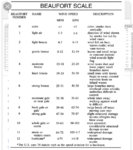AirborneEScouter
Lil-Rokslider
What are you guys doing to effectively adjust your dope? I was shooting 500-900 yards this weekend using rudimentary techniques to gauge distance and wind as I left my rangefinder at home and don't have a kestrel. Found an app online that measures distance from plot points using gps which got my drop figured out within +/- a couple tenths of a mil but the wind was all over the place and I really felt the effect once I shot at 900. My rangefinder has angle compensation so next time I remember to bring it with me I shouldn't have any issues with elevation. 500 and 700 yards weren't bad, but I was shooting from a knob into a canyon and the wind was shifty and I think deeper into the canyon was a little more protected from the gusts up top. Had first round hits at 500 and 700 but took me about a couple dozen to get on target at 900.
Do kestrels help in determining wind direction or just speed? Not that I can't figure it out with some baby powder or a couple straws of grass, just curious. And are the high end kestrels really worth it? I have a ballistics app on my phone and I have a chronograph to get the initial data - I also feel like I could get away with using info from my weather app to plug in humidity and pressure, so I'm weighing whether to drop several hundred on a high end kestrel or just ~$100 with the basics
This was my first time shooting long distance and really helped me understand setting a personal max distance for hunting
Do kestrels help in determining wind direction or just speed? Not that I can't figure it out with some baby powder or a couple straws of grass, just curious. And are the high end kestrels really worth it? I have a ballistics app on my phone and I have a chronograph to get the initial data - I also feel like I could get away with using info from my weather app to plug in humidity and pressure, so I'm weighing whether to drop several hundred on a high end kestrel or just ~$100 with the basics
This was my first time shooting long distance and really helped me understand setting a personal max distance for hunting


 ). That’s always something to remember.
). That’s always something to remember.

